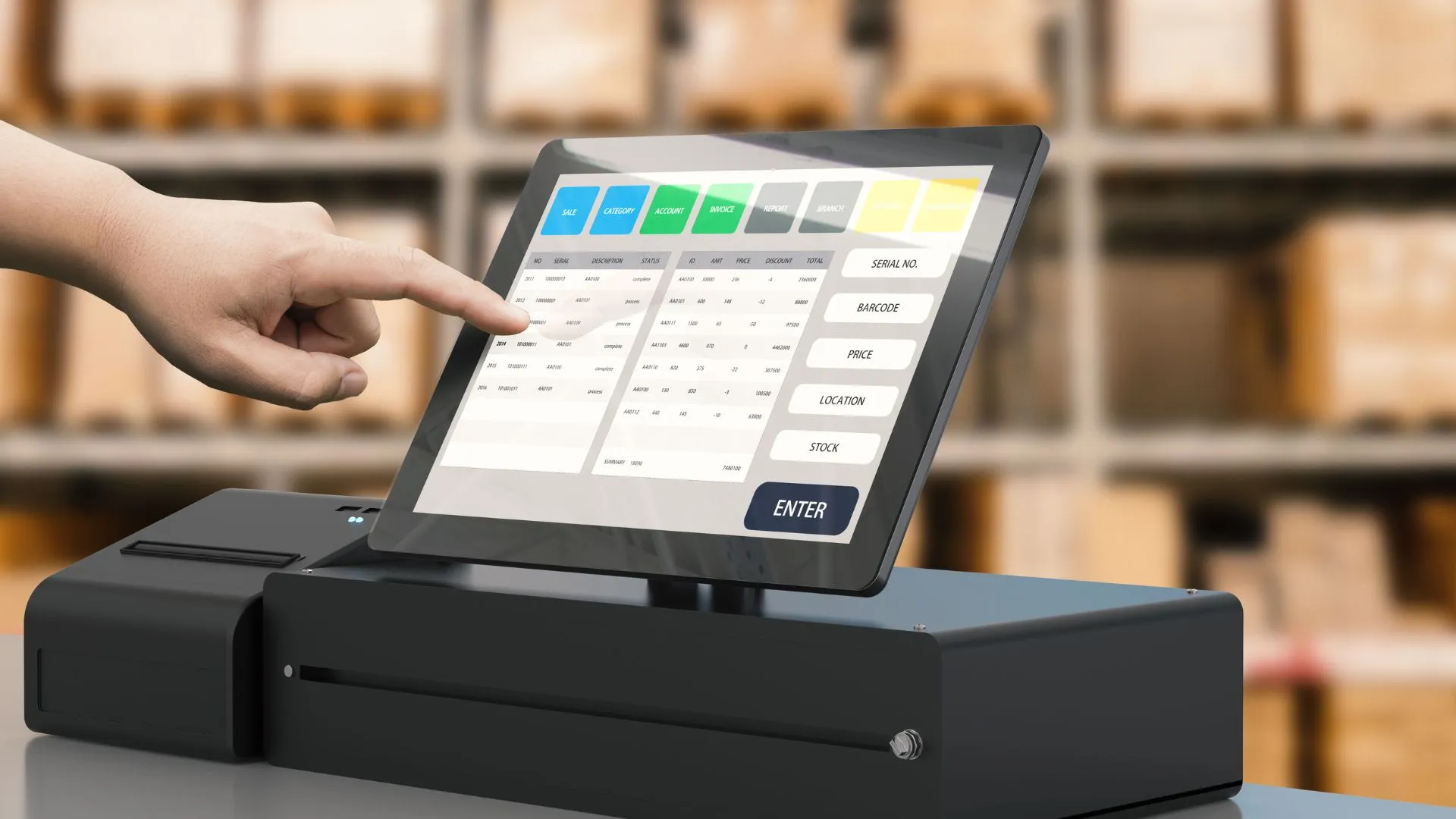System Integration Guide: Methods, Use Cases & The Euvic Framework
System integration is a term used in the business world with various meanings.
Integration projects can mean two things: Either you’re seeking integration to improve the efficiency of your legacy systems and applications, or you’re installing a new advanced and future-proof IT infrastructure and architecture into your business.
Either way, the need for integration across industries in the US and worldwide is ever-growing.
In this guide, we’d like to give you an overview of the integration methods available to SMEs and large enterprises. You’ll also gain insights into our “Euvic System Integration Framework.”
Let’s jump right in.
Why Are We Qualified? Why Should You Trust Our Expertise?
Great question. Euvic, Inc. is the New Jersey Headquarters of the global Euvic group. Our team boasts 6000+ Polish A-player engineers, consultants, architects, etc, and is organized into over 100 specialist teams. During the last 18 years, we’ve executed hundreds of system integration projects, from SMEs to large enterprise companies. Learn more about our prestigious client case portfolio. What makes us truly proud isn’t only the big brands and names like Airbus Military or Pernod Ricard but the scope and the level of capabilities we have.
System integration is a unique field among all IT services. While other industries mainly require the availability of the most recent knowledge, system integration projects require experience and trust above all.
Our senior system integration specialists, consultants, architects, engineers, and managers have decades of experience and can even integrate legacy systems that most young professionals have never heard of.
We’re also using the newest technologies, including GenAI, for software development. Working closely with our SME and enterprise-level clients on all sorts of integration projects enables us to stay ahead of the competition. It gives us the confidence to name ourselves one of the world’s leading system integration specialists.
Popular Reasons and Use Cases for System Integration
As mentioned above, there are many reasons and use cases for integration, with the main differentiator being the integration of legacy systems or a new setup.
System Integration of Established, Existing Software and IT Environments
If you’re running an established, existing software system in your organization that is already covering your needs for functionality, there might be a need for integration when:
- Low efficiency and automation score – handling multiple systems simultaneously without integrating them leads to low overall efficiency of your software environment. As a result, your systems will be prone to errors, and automation will be impossible.
- Duplicate data management – The worst thing you can do is handle the same data sets, like customer data, simultaneously in multiple systems. This multiplies your workload and can quickly become a significant issue regarding data consistency.
- High maintenance cost – Having to export and import data regularly or manage systems simultaneously breaks your entire workflow. As a result, your maintenance cost will go through the roof, as will your payroll for your administrative team.
- Security Issues – A lack of integration can pose a security risk for data loss, theft, or cybercrime, especially for regulated industries like financial services. A closed, fully integrated system and a straightforward workflow provide your business and customers security.
System Integration of New Software Solutions and IT Environments
Are you in the process of setting up a new department, expanding your business to new markets, or just generally modernizing your entire technology stack? In that case, system integration should already be incorporated right from the start. In that case, the integration architects should ideally be involved as early as possible. They can map out and recognize integration opportunities that become important in the future.
For new systems, your needs might include:
- Building a future-proof setup – picking and integrating new software should always include careful consideration of the chosen technologies and integration platforms. Making a wrong choice can result in a massive additional investment in the near future.
- Architecting a fully automated system – especially in engineering, finance, healthcare, retail, or any other industry, the level of automation and efficiency of your software solutions define your competitiveness. The level of automation can be predicted and planned out during the architecture phase.
- Ensuring scalability of all components – integrating a newly created software environment includes recognizing and avoiding possible bottlenecks early on. Our experts can forecast the level of scalability from hands-on experience. Your software environment is only as scalable and robust as the weakest element.
- Data compliance – the trend is noticeable: Companies are moving their IT to the cloud. However, not all cloud solutions meet strict compliance requirements. This is especially important in regulated industries like finance and banking or when dealing with personal customer data. Our data compliance experts know the differences.
Top 3 System Integration Methods & The Euvic Framework
We’ve separated the methods into three main areas to keep this overview straightforward and easy to understand. Please be aware that it’s common for a project to require a combination of the abovementioned methods.
1. Point-to-point System Integration for Simple Integration Needs
As the name suggests, this method connects two or more systems directly. There is no platform in between, and the level of integration is usually limited to the software systems you use. This is the most straightforward method of integration.
A point-to-point integration can usually be planned and executed quickly, regardless of whether there are available interfaces or if we need to develop a custom solution.
Use cases:
- We developed a custom software application for a client to gather data like temperature and humidity. Later, we developed a simple point-to-point integration to feed sensor data into the database using the .Net framework. The main benefit is a stable integration with little to no long-term maintenance cost.
- Another client example and a typical use case for point-to-point integration is the connection of an invoicing system, in this case, an on-premise solution, to an existing ERP. This case didn’t require advanced data integration and included a one-directional transfer from the ERP to the invoicing system only – again, simple, fast, and low maintenance.
2. Cloud-Based Integration & Integration Platform as a Service (iPaaS)
Rather than connecting systems directly, you could also plug your systems, on-prem or cloud/SaaS solutions, into a cloud-based integration platform or iPaaS. An iPaaS has the sole responsibility of collecting data and making it available across all connected systems. This central connection or middleware provides a wide range of integration possibilities.
Cloud integration or iPaaS solutions enable you to access real-time data through interfaces or API connections for other software or hardware, such as IoT devices. Most cloud integration platforms come with pre-built connectors, accelerating integration even further.
Use cases:
- System integration through cloud platforms like Azure Integration Services, Dell Boomi, or Snaplogic is a fast, secure, and scalable way to provide data consistency throughout your IT infrastructure. Besides the obvious benefit of having pre-built connectors and often an almost out-of-the-box platform, cloud integration can combine all of the mentioned integration methods. Point-to-point, ESB, and all other systems can be centrally fed into an iPaaS. Even on-premise Systems or standalone SaaS systems can be integrated.
- Our client, Pernod Ricard, a global leader in alcoholic beverage production and distribution with over 18500 employees, has trusted Euvic with an advanced and ongoing system integration project. We’ve developed and designed an integration platform using the Azure cloud.
- Their global distribution is interconnected and requires constant adaptation and further development. Their main ERPs, Microsoft Dynamics 365 and Oracle JD Edwards, are used for planning, warehouse management, logistics, production, and tracking. We’ve developed custom cloud solutions that are scalable, cost-efficient pay-as-you-go systems.
3. ESB (Enterprise Service Bus) for High Flexibility & Scalability
The term ESB describes a software framework. Technically, it’s not a type of integration like point-to-point or cloud platform integration but rather a model of architecture that requires comprehensive technical knowledge. An Enterprise Service Bus (ESB) is a software architecture that utilizes the principles of Service-Oriented Architecture (SOA).
SOA is a development method that uses services to create business apps. Each service provides a business capability, and they can communicate across platforms and languages.
The ESB framework can provide a deep level of integration, including logging and messaging, that no other integration method can. This method is much more complex than other methods mentioned, and the project size, ongoing development, maintenance, or license cost can be much higher. Learn more about the pros and cons of the ESB framework.
Chances are, if you’re using an ESB or planning to set one up, there are specific reasons.
This is for advanced enterprise client needs.
Use case:
- ESB can be used for sole on-prem solutions or combined with clouds. Its central elements are the framework on which it is architected, designed, and built.
- Regulated industries like finance, banking, and industrial companies rely especially on the Enterprise Bus Framework. Our senior integration experts are natives of these systems and know all the industry-leading applications, frameworks, and legacy systems.
- Popular systems are Mule ESB, Microsoft BizTalk, Oracle ESB, and WebMethods by Software AG. Find a full list of popular ESB software solutions.
Conclusion – The Euvic Integration Framework
Surely you’ve heard of the term “vendor lock-in” before. This is a common fear in the IT industry, and we think it’s rightfully so. Vendors in the scope of integration aren’t only the mentioned cloud platforms or solution providers, making you dependent on their systems, pricing, or future support and development—vendor lock-in can theoretically happen between you and your IT service partners like Euvic, too.
If you look at it closely, you’ll realize that vendor lock-in can never be avoided. There is always a commitment to choosing the right software solutions, hosting, or even architecture and frameworks.
Going back or suddenly changing plans will always be costly and can ruin your business financially.
You can’t avoid the lock-in to some degree, but you can minimize mistakes and risks by thoroughly assessing the options and simulating the system, its capabilities, and expectations for the future.
Our clients love and enjoy working with us because we treat them like partners. As partners, we apply our +18 years of experience to help you choose the best systems and frameworks for your needs.
Talk to us, talk to our clients, and do your due diligence to minimize the risk of suffering from a system, service partner, or conditions you’re not happy with. Our Euvic Integration Framework is a full blueprint that enables us to choose the best option for you, including readily prepared connectors and integration solutions, for a fast start and execution.
Euvic is a competitive advantage for us. The technical excellence that Euvic has brought is not easily matched and their support has become integral to our growth strategy.

Euvic is a competitive advantage for us. The technical excellence that Euvic has brought is not easily matched and their support has become integral to our growth strategy.

Euvic is a competitive advantage for us. The technical excellence that Euvic has brought is not easily matched and their support has become integral to our growth strategy.

Talk to Your Local Euvic Team
















.webp)







































































